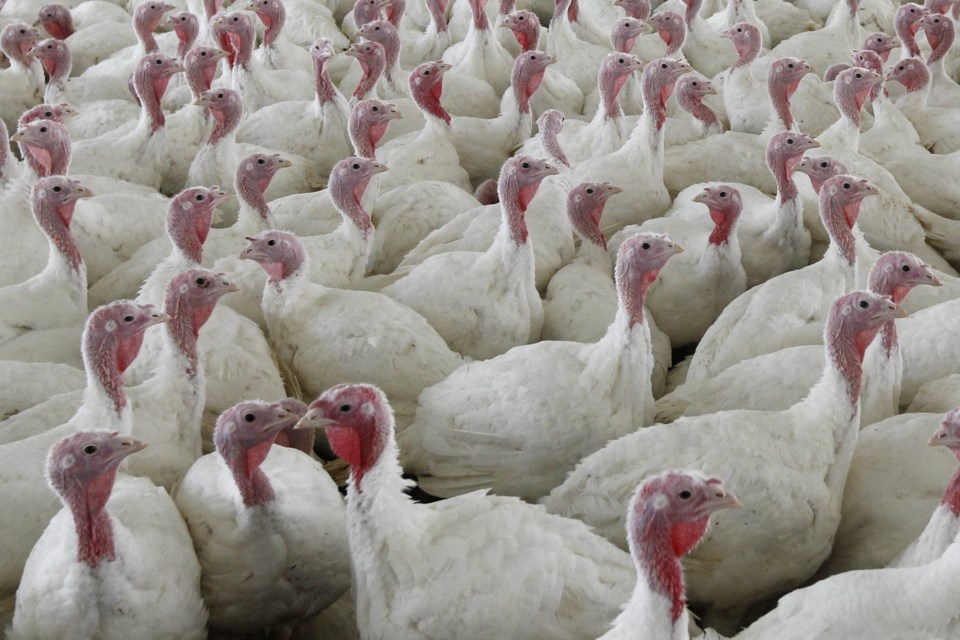The Agriculture Department on Monday announced plans to limit salmonella in poultry products in the U.S., a proposal that officials say will keep contaminated meat off store shelves and lead to fewer illnesses.
Under the proposed new rule, poultry companies would have to keep salmonella levels under a certain threshold and test for the presence of six particularly sickening forms of the bacteria, three found in turkey and three in chicken. If the bacteria exceeds the proposed standard and any of those strains are found, the poultry couldn't be sold and would be subject to recall.
The poultry industry has made progress in reducing the amount of salmonella in its products over the past three decades, said Dr. Emilio Esteban, USDA undersecretary for food safety.
“However, there’s not been a similar decline in people in the number of illnesses,” he said.
The U.S. Centers for Disease Control and Prevention estimates salmonella annually, most of them through food, and about 420 deaths. The Agriculture Department estimates 125,000 infections from chicken and 43,000 from turkey each year.
Under the proposal, poultry companies would also have to establish monitoring programs that would identify contamination throughout the slaughter system. The proposal includes guidelines for lowering the chance of salmonella spreading through flocks before harvest, including vaccinating birds against the bacteria.
The proposed rule, , would be finalized after a public comment period.
In April, the department told poultry producers to reduce salmonella in certain frozen poultry products as a first step. It was the first time the agency labeled salmonella as a contaminating “adulterant" in food, alongside certain types of E. coli.
The National Chicken Council, which lobbies for the U.S. broiler chicken industry, opposes additional requirements.
Ashley Peterson, a senior vice president for the group, questioned if the proposal was “demonstrated to positively impact public health” and said it could significantly raise prices. She said the council is committed to further reducing salmonella and looked forward to reviewing the full USDA proposal.
Martin Bucknavage, a Penn State food scientist, said tracking specific levels and types of the bacteria is “not an easy thing," especially at the fast pace at which poultry hits store shelves.
He expects the industry will need time to adjust and it would take a while to see if the new requirements actually slow food poisoning cases.
“Certainly, lowering the level of salmonella lowers your risk of getting ill,” Bucknavage said.
The USDA took similar action with E. coli bacteria in 1994 after deadly food poisoning outbreaks tied to ground beef, and the number of related foodborne illnesses by more than 50%.
The agency didn't set limits on salmonella levels until now because there weren't good enough tools and technology to track the bacteria in this way, but now “it's time to change our approach,” Esteban said.
“One of my commitments to this mission, to USDA, has been that I would not do things without having science to back us up," he said. "We have the tools. We have the technology. We have the knowledge.”
___
The Associated Press Health and Science Department receives support from the Robert Wood Johnson Foundation. The AP is solely responsible for all content.
Devi Shastri, The Associated Press




